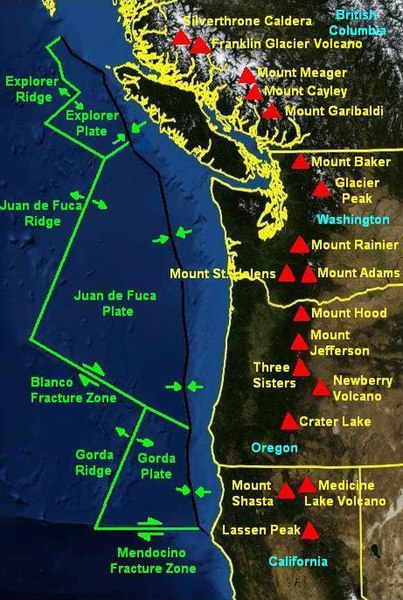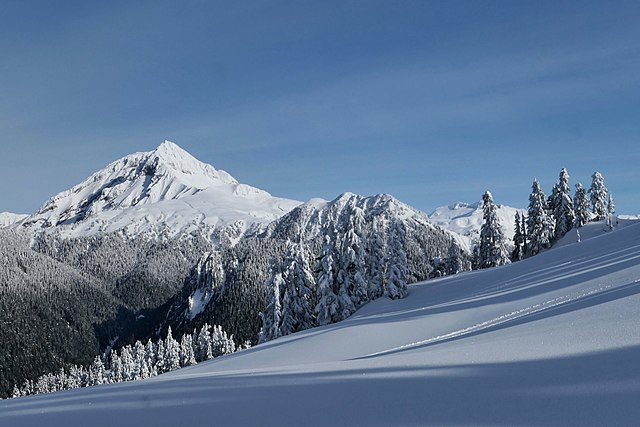The Cascade Volcanoes are a number of volcanoes in a volcanic arc in western North America, extending from southwestern British Columbia through Washington and Oregon to Northern California, a distance of well over 700 miles (1,100 km). The arc formed due to subduction along the Cascadia subduction zone. Although taking its name from the Cascade Range, this term is a geologic grouping rather than a geographic one, and the Cascade Volcanoes extend north into the Coast Mountains, past the Fraser River which is the northward limit of the Cascade Range proper.
Mount Rainier from the northeast
Image: Cascade Volcanic Arc
Lassen Peak and Devastated Area from Cinder Cone
Mount Garibaldi as seen from the south
A volcano is a rupture in the crust of a planetary-mass object, such as Earth, that allows hot lava, volcanic ash, and gases to escape from a magma chamber below the surface.
Sabancaya volcano erupting, Peru in 2017
Lakagigar fissure vent in Iceland, the source of the major world climate alteration of 1783–84, has a chain of volcanic cones along its length.
Skjaldbreiður, a shield volcano whose name means "broad shield"
Izalco volcano, the youngest volcano in El Salvador. Izalco erupted almost continuously from 1770 (when it formed) to 1958, earning it the nickname of "Lighthouse of the Pacific".








